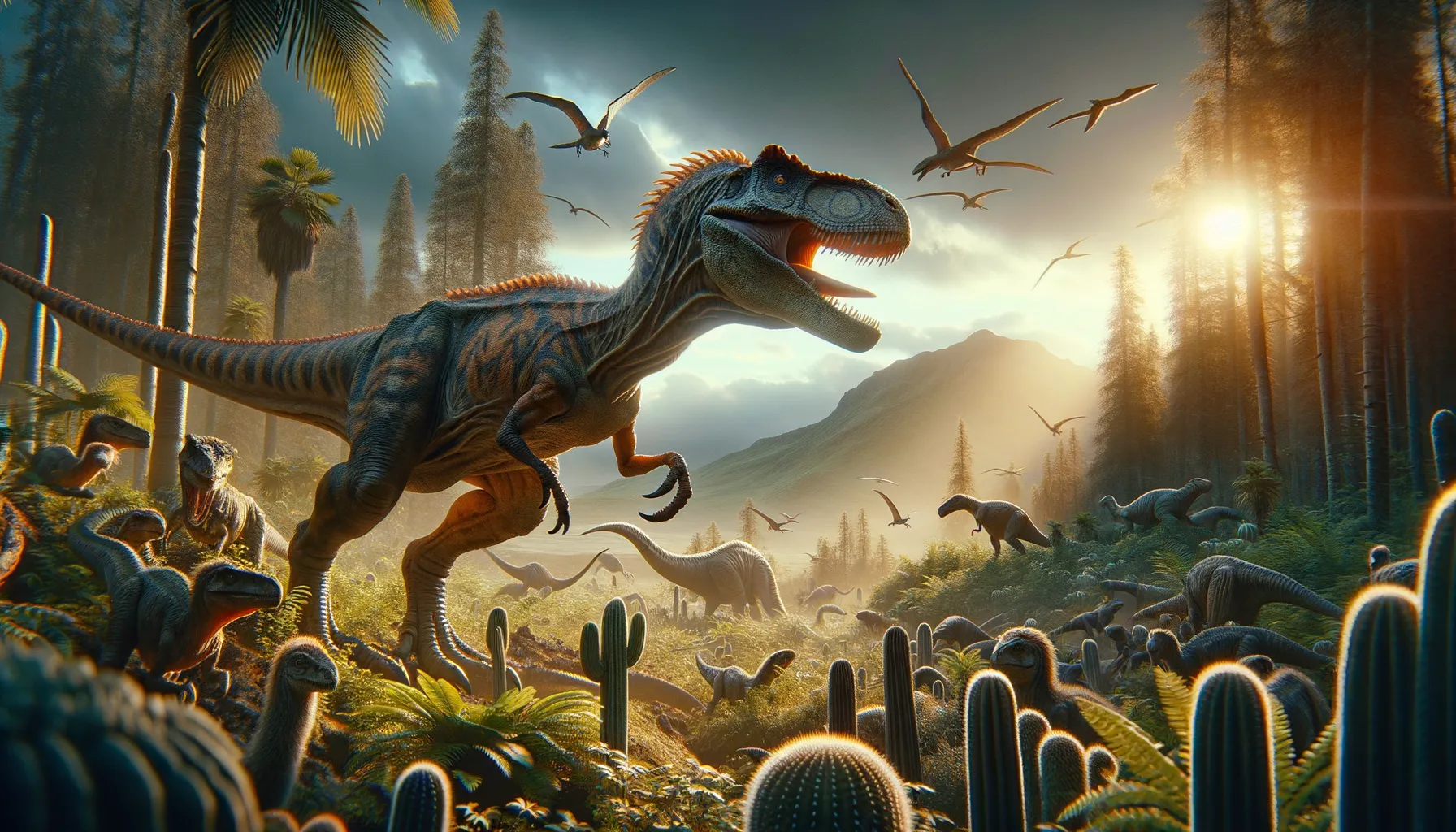
Ajancingenia
Swift hunter of the Cretaceous sands.
Period
triassic
Length
Roughly 1.8 meters long.
Height
Approximately 0.9 meters tall.
Weight
Around 25 to 40 kilograms.
Ajancingenia was a small theropod dinosaur known for its swift agility and distinctive physical features, lived during the Cretaceous period in what is now Mongolia. With its lightweight body, it was adapted for quick movements, aiding in both hunting and evading predators. Its lifestyle and biology offer valuable insights into the diverse ecosystems of the time.
Diet
Ajancingenia likely had an omnivorous diet, feeding on small animals, insects, and possibly plants. Its diet included various small creatures available in its habitat, helping it survive in its dynamic ecosystem.
Hunting
With its nimble body and quick reflexes, Ajancingenia likely hunted small prey using sudden bursts of speed. Its sharp claws and keen senses aided in capturing insects and small vertebrates.
Environmental challenges
Ajancingenia faced environmental challenges such as fluctuating climates and competition from larger predators. Adapting to seasonal changes in food availability was crucial for survival. The landscape presented further challenges with varied terrains that required agile movement and effective foraging strategies.
Speed
Likely fast and agile for its size.
Lifespan
Estimated around 10 to 20 years.
First discovery
Discovered in Mongolia in the 1970s.
Fun Facts
- Ajancingenia was a small dinosaur, roughly the size of a large turkey, making it one of the pint-sized members of the dino world.
- This dinosaur was part of the Oviraptoridae family, known for their beak-like jaws and often misunderstood reputation as 'egg thieves.'
- Ajancingenia lived during the Late Cretaceous period, around 70 million years ago, in what is now Mongolia.
- Despite its small size, it had strong, powerful legs and is believed to have been a fast and agile runner.
- Fossils of Ajancingenia have shown that it had a long tail which likely helped balance when it was sprinting around its habitat.
- Its hands had three fingers with large claws, which it possibly used to dig for food or to fight off predators.
- Ajancingenia had a likely feather-covered body, which may have helped in regulating its body temperature or could have been used for display.
Growth and Development
Ajancingenia underwent rapid growth from juvenile to adult stages, crucial for quick adaptation to its surroundings. It likely experienced changes in size and proportion as it matured, allowing for enhanced mobility. Its development stages equipped it with skills necessary for survival in its competitive ecosystem.
Habitat
Ajancingenia inhabited the semi-arid regions of present-day Mongolia during the Cretaceous. The environment featured both open plains and forests, providing diverse ecological niches. Its habitat supported a wide range of flora and fauna, contributing to its varied diet.
Interaction with other species
Ajancingenia coexisted with a variety of dinosaurs and other ancient creatures, sharing its habitat with both predators and prey. It likely engaged in territorial behaviors to establish dominance and access to resources. Its interactions with other species were essential for maintaining ecological balance.
Natural lifespan
Ajancingenia had a natural lifespan that allowed it to mature and reproduce within its competitive environment.
Reproduction
Ajancingenia is thought to have reproduced by laying eggs, like other theropods of its time. Parental care, if any, remains undetermined, though it's possible adults guarded nests. Its reproduction strategy was crucial in sustaining population numbers across generations.
Social behaviour
Ajancingenia may have exhibited solitary behavior, focusing on independent foraging. However, there is potential it formed small groups for collaborative hunting or defense. Its social structure would have impacted its survival and reproductive success.
Fossil locations
Fossils of Ajancingenia have predominantly been found in the Mongolian region, offering insights into the Cretaceous ecosystems. These findings have contributed significantly to understanding the diversity of theropods in Asia. The well-preserved state of some fossils has provided detailed information about its physical characteristics and lifestyle.
